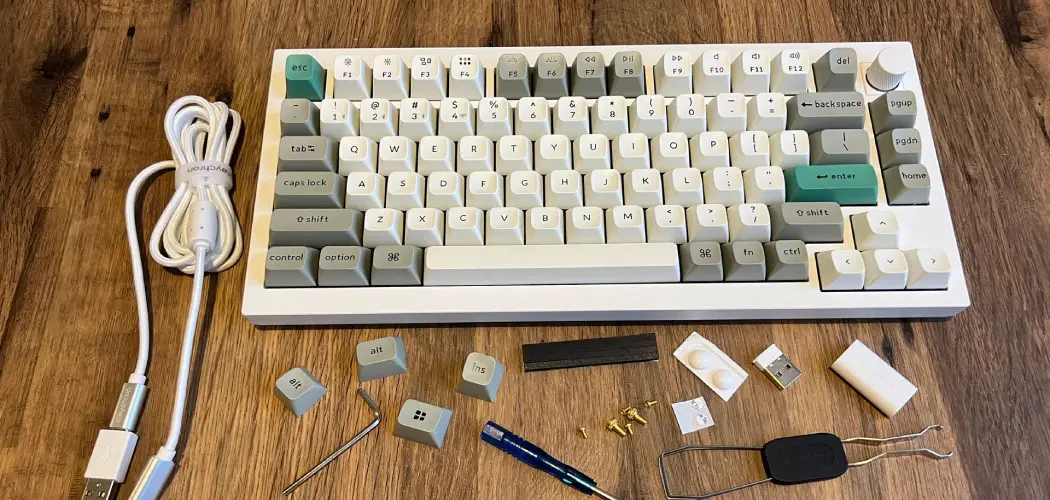Crafting your own PBT (Polybutylene Terephthalate) keycaps can be a rewarding endeavor for keyboard enthusiasts seeking a personalized touch to their mechanical keyboards. PBT is known for its durability, resistance to wear, and high-quality feel, making it a popular choice among keyboard enthusiasts.
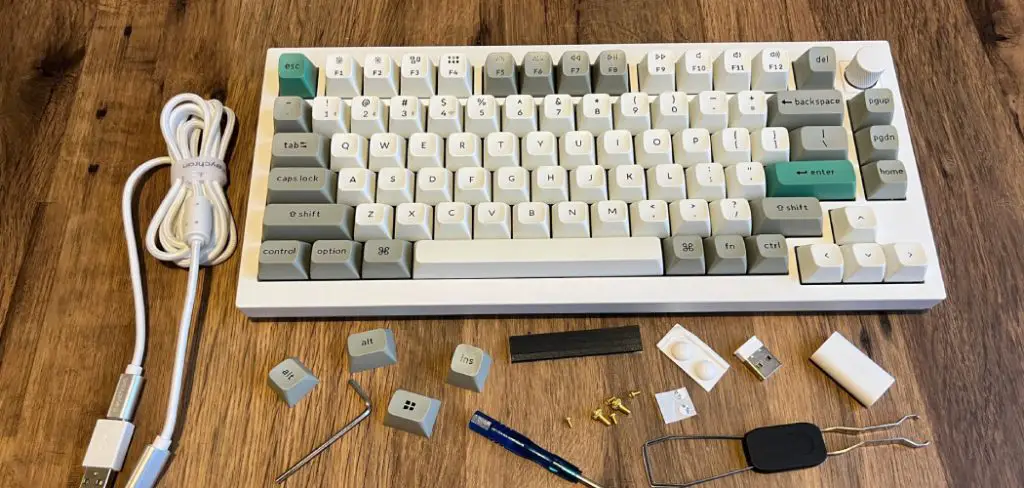
In this guide, we delve into the art of making PBT keycaps, exploring the step-by-step process of how to make keycaps pbt, materials required, and the creative possibilities it unlocks.
Whether you are customizing your keyboard for improved aesthetics or pursuing a unique typing experience, understanding how to make PBT keycaps allows you to tailor your keyboard to your preferences.
From molding and shaping techniques to the finishing touches that elevate the final product, this article provides insights into the intricate world of crafting PBT keycaps, empowering keyboard enthusiasts to embark on a hands-on journey of customization.
Definition of PBT Keycaps
PBT keycaps are made from Polybutylene Terephthalate, a type of thermoplastic that is known for its durability, resistance to solvents, and low absorption of moisture. Unlike their ABS (Acrylonitrile Butadiene Styrene) counterparts, which are more prone to wear and tear, PBT keycaps retain their texture and lettering for a much longer time, ensuring that the keycaps don’t shine or fade quickly with use.
This makes them highly sought after by typing enthusiasts and professionals who prioritize longevity and quality in their keyboard components. The material’s dense composition not only contributes to a more solid feel when typing but also allows for deeper and more vibrant dyeing processes, resulting in richer and more lasting colors.
Importance of PBT Keycaps in Keyboard Customization
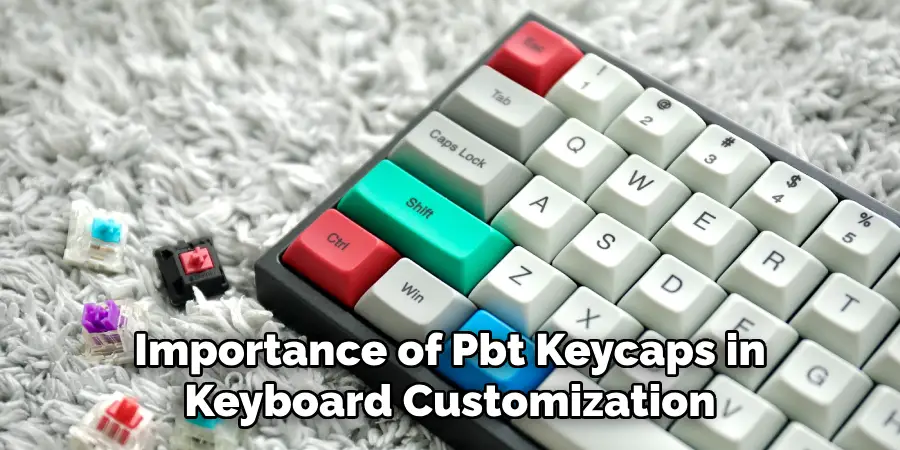
The importance of PBT keycaps in keyboard customization cannot be overstated. For enthusiasts who value both aesthetic and typing experience, PBT keycaps offer an unparalleled level of personalization.
The superior durability and resistance to wear of PBT material ensure that the keycaps maintain their visual appeal and tactile feel over extensive periods of use, making them a wise investment for any custom keyboard project.
Furthermore, the versatility in coloring and styling that PBT keycaps provide allows individuals to express their personal style and preferences, transforming an ordinary mechanical keyboard into a unique statement piece. Whether it’s through vibrant colors, intricate designs, or ergonomic shapes, PBT keycaps enable users to create a truly customized typing environment that reflects their individuality and enhances their daily computer interactions.
Understanding PBT Material
To fully appreciate the value of PBT keycaps, one must understand the nature of the Polybutylene Terephthalate (PBT) material itself. PBT is a semi-crystalline polymer that is known for its strength, heat resistance, and durability.
It demonstrates remarkable stability under mechanical stress and thermal conditions, which makes it an ideal material for creating keycaps that are subjected to constant, repetitive use.
Additionally, PBT’s resistance to chemicals and solvents, coupled with its low moisture absorption, ensures that keycaps made from this material remain unaffected by spills and are less likely to develop bacterial growth over time.
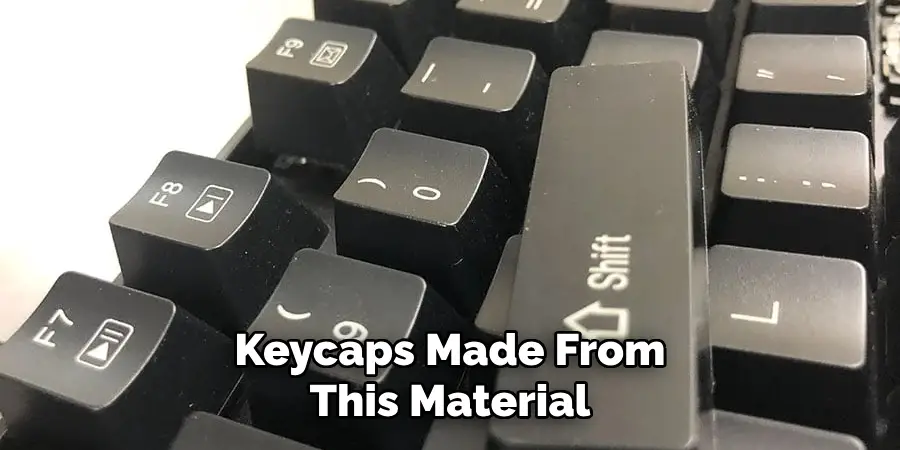
The manufacturing process of PBT keycaps also allows for a greater depth of color and a matte finish, which contributes to their aesthetic appeal. Understanding these properties explains why PBT keycaps are preferred by enthusiasts who prioritize long-lasting quality and appearance in their keyboard customization projects.
Characteristics of PBT Plastic
PBT plastic exhibits several characteristics that distinguish it from other thermoplastics and make it an outstanding material for keycap manufacturing. One of the key features of PBT is its excellent dimensional stability, which ensures that keycaps retain their shape and size even under varying temperatures.
This stability is crucial for maintaining the precision and consistency critical in keyboard design. Furthermore, PBT is renowned for its high resistance to heat, capable of withstanding temperatures up to 150°C without deforming, making it suitable for environments that may experience elevated temperatures.
Another significant characteristic is its toughness; PBT plastic is hard and robust, contributing to the durability and longevity of keycaps made from this material.
Additionally, it offers superior resistance to chemicals, including common acids and bases, allowing it to maintain its integrity even when exposed to spills or cleaning agents. The material’s low moisture absorption rate is another beneficial property, reducing the potential for water damage or bacterial growth over time.
From an aesthetic standpoint, PBT allows for deep and vibrant dyeing, resulting in keycaps with rich colors that do not fade easily over time. Its natural matte finish provides a premium, non-glossy look and enhances the tactile experience by reducing slipperiness.
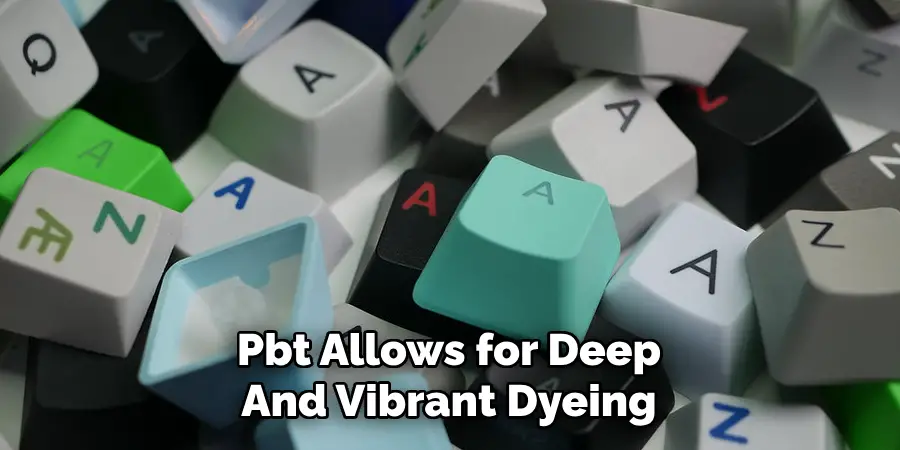
Collectively, these characteristics make PBT plastic an ideal choice for creating high-quality, durable, and aesthetically pleasing keycaps for mechanical keyboards.
10 Methods How to Make Keycaps PBT
1. Understanding PBT Properties:
Before diving into the crafting process, familiarize yourself with the unique properties of PBT. Recognized for its durability, resistance to wear, and ability to retain its texture, PBT is an excellent material choice for custom keycaps. It is a type of thermoplastic polyester that stands out for its strength and rigidity, making it ideal for use in mechanical keyboards.
PBT has a much higher melting point compared to other plastics, which means it can withstand high temperatures without warping or deforming. This makes it an excellent choice for keycaps as they are constantly exposed to heat from fingers pressing down on them. Furthermore, PBT is highly resistant to chemicals and UV radiation, ensuring that your keycaps will not fade or discolor over time.
In terms of texture, PBT has a more matte and textured finish compared to ABS plastic, which is commonly used for keycaps as well. This gives PBT keycaps a more premium and high-quality feel, making them a popular choice among keyboard enthusiasts. Additionally, PBT is less prone to becoming shiny and slippery over time, unlike ABS which can become smooth and glossy with use.
2. Gathering Materials and Tools:
Collect the necessary materials and tools for keycap crafting. This includes PBT pellets, molds, a keycap puller, a mixing bowl, a heat-resistant spatula, and a keycap press. Ensure all materials are of high quality for optimal results. You may also want to invest in a digital scale for accurate measurements. Though not necessary, it can be helpful in achieving consistent keycap sizes.
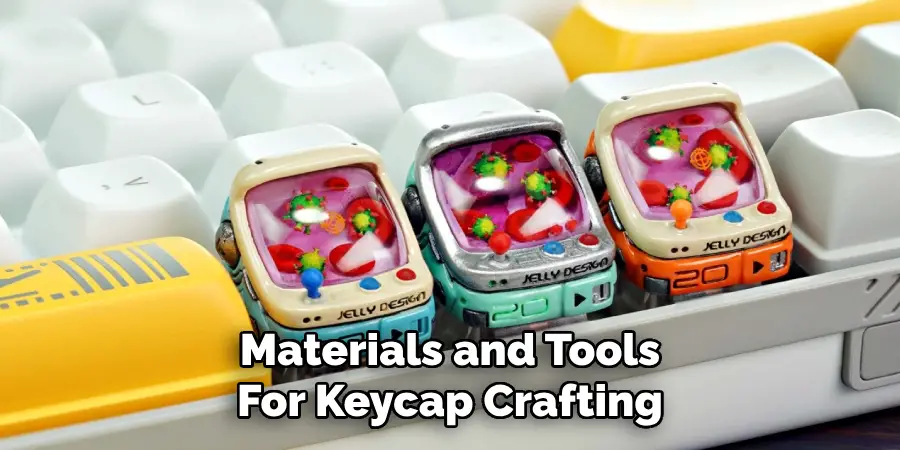
Next, prepare your workspace by laying down a sheet of parchment paper or wax paper to protect your work surface. This will also make clean up easier.
3. Creating a Design:
Plan the design of your keycaps, considering factors like shape, texture, and any custom symbols or patterns. Create a detailed design template to guide you through the molding and casting stages. This is a crucial step for achieving the desired aesthetics.
After creating a design template, it’s important to choose the right materials for your keycaps. The most commonly used material is ABS plastic, which is known for its durability and flexibility. However, you can also use other materials such as PBT or POM for different textures and finishes.
Once you have chosen your material, it’s time to start molding and casting your keycaps. This process involves making a mold of your design template and then pouring the chosen material into the mold to create the final product. It’s important to follow safety precautions while handling hot materials during this stage.
4. Molding the Keycaps:
Use silicone molds to create the shapes of your keycaps. Pour melted PBT pellets into the molds, ensuring even distribution. Allow the PBT to cool and solidify within the molds, taking care to follow safety precautions when handling hot materials. Once the keycaps have cooled, pop them out of the molds and trim off any excess material.
Once you have your desired keycap shape, it’s time to add some color! You can use a variety of techniques such as dyeing or painting to give your keycaps a unique look. For dyeing, simply mix the desired color into the melted pellets before pouring them into the molds. For painting, use acrylic or enamel paint to carefully add designs or patterns onto the keycaps once they have solidified.
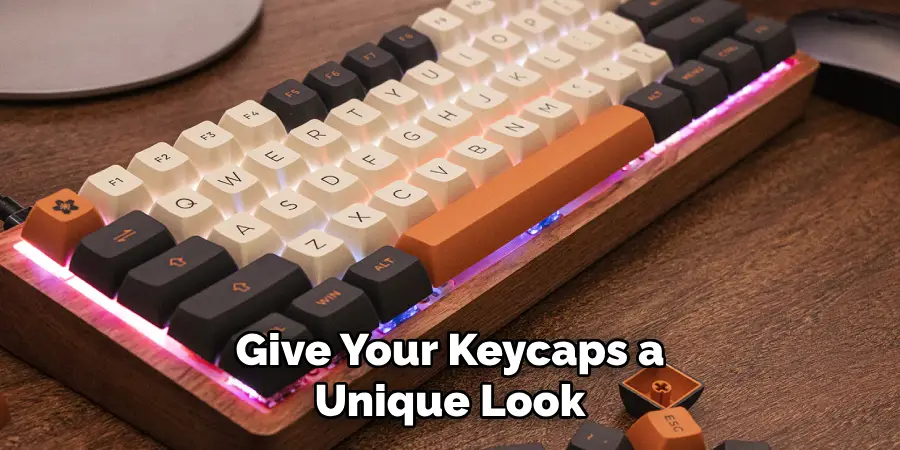
If you want to go one step further, you can also add texture to your keycaps by using different types of finishes such as matte, glossy, or textured spray paints. Experiment with different techniques and colors to create a truly customized set of keycaps for your keyboard.
5. Adding Texture and Legends:
If your design includes specific textures or symbols, incorporate them during the molding stage. Ensure that any legends or characters are precisely engraved or embossed onto the keycaps for a professional and accurate appearance. These symbols and textures can add a unique touch to your keyboard design, making it stand out from others on the market.
Additionally, consider including legends or characters that are relevant to the theme or purpose of your keyboard. For example, if you are designing a gaming keyboard, you may want to include symbols commonly used in popular games. This will not only enhance the overall aesthetic but also make the keyboard more functional for its intended use.
When adding texture to your keycaps, be mindful of the material being used. Some materials may not be suitable for certain textures or may result in a less defined appearance. It is important to test and experiment with different materials to find the perfect combination that will bring your design to life.
6. Coloring the Keycaps:
Customize the color of your PBT keycaps by adding pigments or dyes to the melted PBT pellets. Experiment with different color combinations to achieve the desired aesthetic. Take note of the pigmentation ratio to maintain consistency across all keycaps. However, ensure that the pigments or dyes used are safe for prolonged use and do not affect the durability of the keycaps.
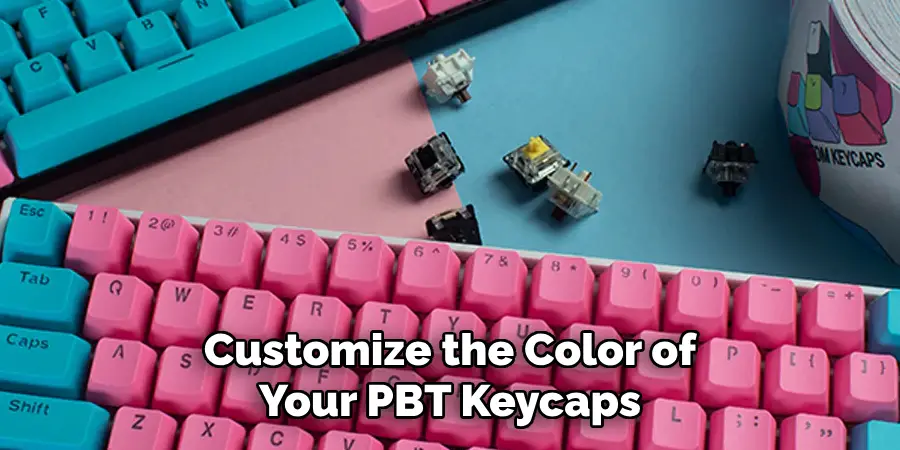
7. Smoothing and Polishing:
After the keycaps have fully solidified, use sandpaper or a polishing tool to smooth any rough edges or imperfections. This step is crucial for achieving a polished and refined final product. Gradually move to finer grits of sandpaper for a smoother finish.
In addition to sanding, you can also use a buffing wheel or polishing compound for an even more polished look. This will help to remove any remaining imperfections and give your keycaps a shiny finish.
When it comes to smoothing and polishing, patience is key. Take your time and make sure not to rush through this process. It may take multiple rounds of sanding and polishing to achieve the desired result, but the end product will be worth it.
To add an extra touch of customization, you can also consider adding a top coat to your keycaps. This can be done with either a clear sealant or a glossy spray paint. Not only will this protect your keycaps from wear and tear, but it will also give them a professional and polished look.
8. Finishing and Coating:
Apply a protective coating to enhance the durability and appearance of your PBT keycaps. Options include clear sealants or UV-cured coatings. Ensure that the coating is even and adequately covers the entire surface of each keycap. For a glossy finish, use a high-gloss coating and for a matte finish, opt for a low-gloss coating. Let the keycaps dry completely before use. Make sure to apply multiple thin layers instead of one thick layer for a smoother and more professional finish.
Some keycaps, especially those made from doubleshot PBT material, may come with a matte finish already. However, these keycaps can still benefit from an extra layer of coating for added protection against wear and tear.
It’s important to note that different coatings may affect the feel of your keycaps. A thick coating may make the keycaps feel sticky or too smooth, while a thin coating may not provide enough protection. Experiment with different types of coatings to find the one that best suits your preferences.
9. Testing and Adjusting:
Before finalizing your keycaps, test their fit and feel on your keyboard. Make any necessary adjustments to ensure a snug fit and comfortable typing experience. This step is crucial for identifying and rectifying any issues before completion.
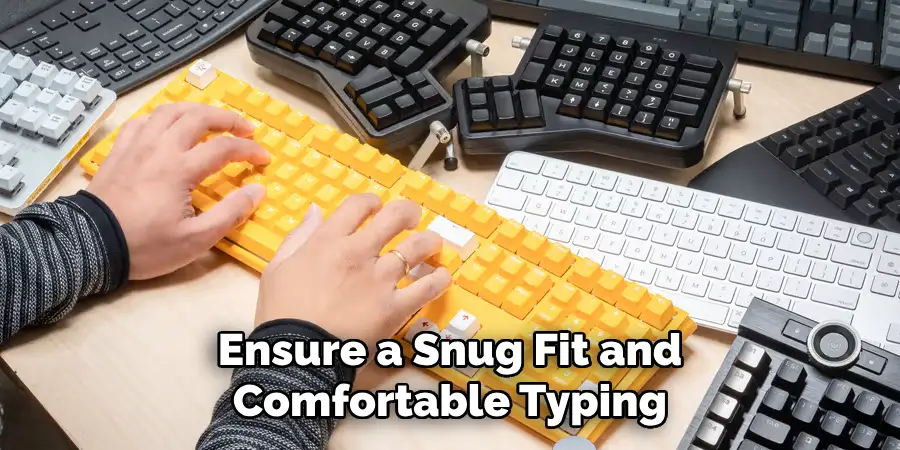
Once you have made any necessary adjustments, it is time to test the stability of your keycaps. Press down on each key gently and check for any wobbling or instability. If you notice any issues, try adjusting the placement of the keycap or using a stabilizer to provide better support.
After testing and adjusting, take some time to appreciate your newly customized keyboard. Admire the unique design and personalized touch that your keycaps have added to your keyboard. Take some pictures and share them with your friends or on online forums for other keyboard enthusiasts to admire.
But the process doesn’t end here. It is important to regularly test and adjust your keycaps as they may shift over time due to usage or environmental factors. Keep an eye out for any loose or wobbly keycaps and make necessary adjustments to maintain the overall functionality and aesthetics of your keyboard.
Furthermore, don’t be afraid to experiment with different types of keycaps and designs. The possibilities are endless when it comes to customizing your keyboard, so have fun exploring different options and finding the perfect fit for you.
10. Showcasing Your Creations:
Once satisfied with the final product, showcase your custom PBT keycaps on your mechanical keyboard. Share your creations with the keyboard enthusiast community, and consider documenting your process to inspire others in the world of DIY keycap crafting. You can also sell your custom keycaps to other keyboard enthusiasts who are looking for unique and personalized options for their keyboards.
Take high-quality photos of your keycaps on your mechanical keyboard, both in natural lighting and with a studio setup. Use photo editing software to enhance the colors and details of your keycaps, making them stand out even more. Share these photos on social media, forums, and other online platforms to showcase your keycaps and reach a wider audience.
Consider creating a portfolio or website dedicated to showcasing your custom keycap designs. This will not only serve as a platform for others to see and purchase your work but also allow you to track your progress as a keycap artisan.
Additionally, consider participating in keyboard enthusiast meetups or conventions where you can display your keycaps in person and interact with others who share the same passion. This is a great way to network, receive feedback, and potentially gain commissions for custom keycap designs.
Conclusion
In conclusion, the process of making PBT keycaps involves meticulous attention to detail and craftsmanship to produce high-quality keyboard components. Understanding the unique properties of PBT material and its advantages over other plastics is essential for creating durable and aesthetically pleasing keycaps.
From preparing raw materials to designing molds and utilizing advanced production techniques like injection molding, keycap manufacturers ensure precision and consistency throughout the manufacturing process. Hopefully, this article gave you some helpful tips about how to make keycaps pbt successfully, so now that you have the proper knowledge on how to get the job done, why not give it a try today?

